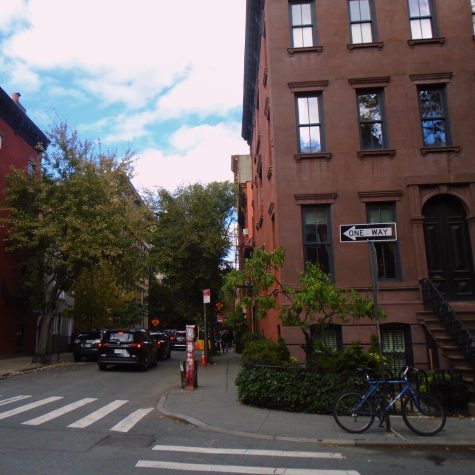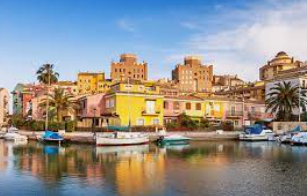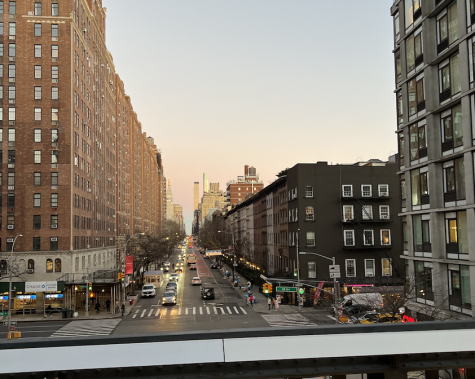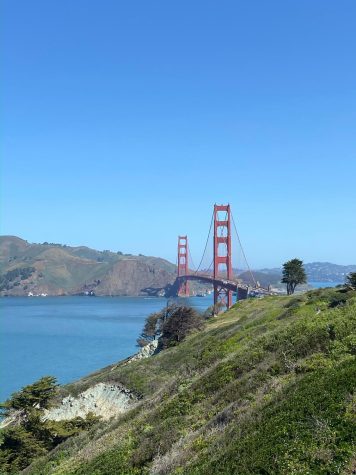Carnival Around the World
Celebrations of Carnival in other countries
Throughout February and March, cities around the world put on a giant show for Carnival. This extravagant and wild celebration occurs during Shrovetide—the period before Lent. The celebration of Carnival is meant to be a time of indulgence, fun, eating, and drinking leading up to the month-long duration of Lent until Easter. Although the ambiance and essence of these exciting parties thrown around the world are in many ways similar, every location has its own unique way of celebrating.
Venice, Italy
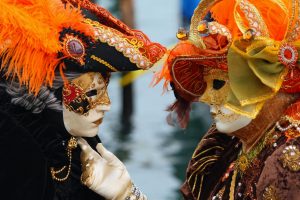
Occurring from February 19 – March 5, the Carnival in Venice dates back to 1296 when the holiday was decreed an official public holiday. The event really took off during the height of Venice’s influence in the 18th century. During this time, the city’s Carnival became known throughout Europe and people came from all over the continent to experience the occasion.

Carnival in Venice is known as a time of mystery, indulgence, decadence, and celebration. Above all, Carnival in Venice is characterized by the wide array of interesting and descriptive masques sported by those who participate in the holiday. Traditionally, these masques allowed Venetians to defy social laws and norms under the cover of false identity. The masques allowed their owners to hide their gender, age, and emotions. With such ambiguity, Venetians could truly indulge in many pleasures they desired without criticism. While today masques are not worn during Carnival for the purpose of hiding identity in order to commit sin and defy norms, they can still be seen throughout the city on the face of street performers, people attending parties, and participants in parades. Also, most people wearing masques are also adorned in flamboyant costumes that are reminiscent of the traditional extravagance of the celebration.
Cologne, Germany

Dating back to the 19th century, Carnival in Cologne is celebrated with parties in the streets, city squares, and pubs. During the festival, pubs typically lengthen their hours to extend celebrations later into the night. One of the primary characteristics of the celebration in Cologne is a wide array of parades. Of these parades, one of the most popular is the Rose Monday Parade. During this event, massive floats glide through the city’s streets as hoards of flowers, chocolates, sweets, and bottles of Eau de Cologne are thrown from the floats in to the crowds. The highlight of the parade is Cologne’s Triumvirate—the Prince, Peasant, and Maiden who are the center of the parade’s procession. Two days after the parade, Cologne’s Carnival celebration ends on Ash Wednesday.

Following Rose Monday celebrations, festivities continue into the next day called Carnival Tuesday when more parades ensure throughout the suburbs of Cologne. This festivities of this day rage on until midnight, and the day is capped by the burning of a straw figure called “Nubbel”.
Rio De Janeiro, Brazil
The Carnival celebration in Rio De Janeiro is arguably the epicenter of the celebration of Carnival on the planet. Known for its wild parties, extravagant parades and dazzling costumes, Rio’s festivities are comprised of three main components:
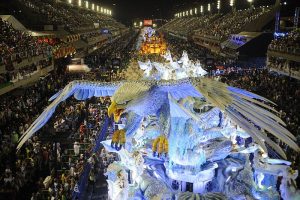
Carnival Parade at the Sambadrome
The city of Rio revolves around the dance form known as Samba. Throughout the city, there are more than 70 Samba schools teaching people how to dance. During Carnival, all of these Samba schools gather together at the Sambadrome, a ginormous stadium that can hold up to 90,000 spectators and was built solely for the purpose of celebrating Carnival, to compete against each other. The competition ensues over two nights, and the ultimate winner wins a cash prize as well as fame in the eyes of every Brazilian. Being televised around the nation, the competition is one of the most anticipated and viewed events in Brazil throughout the year. During the competition, spectators view the teams dance in exquisite costumes atop of massive floats as they glide down the length of the Sambadrome.

Blocos Street Parties
The rambunctious street parties knows as “Blocos” are the epicenter of the excitement in Rio’s Carnival celebration. These parties allow residents of the city and tourists to engage in dance, drinking, and wild celebration. Typically, these parties last from 8 am one day until 8 am the next. Participants in the festivities truly party the night away. At the parties, hundreds of thousands of people sporting festive costumes congregate in the streets and drink beer and Brazilian rum while they listen to the beat of music and drums. These parties pop up all over Rio and are easy to find and join in with the crowd.

Rio’s Exclusive Bailes (Carnival Balls)
As the celebration of Carnival in Brazil has European origins, some of the events in the city are similar to those present in Venice. In particular, ritzy and exclusive masquerade balls known as bailes occur across the city. One of the most impressive of these events is hosted at the Copacabana Palace Hotel located on Rio’s exquisite Copacabana Beach. To these events, guests wear exquisite evening gowns and tuxedos.
Nice, France
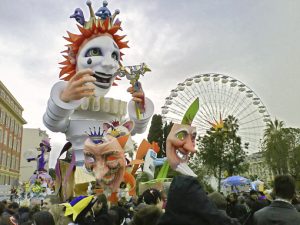
Attracting hundreds of thousands of spectators, the Nice Carnival is one of the most popular events on the Riviera throughout the year. The celebration lasts for two weeks and three weekends throughout February and early March. Every year, the festival has a different theme around which the decorations, floats, and activities are centered. In 2019, the theme was “King of Cinema”.
Similar to the Carnival celebrations in Cologne, the heart of the Nice Carnival is the many parades in the city. There are three major categories of parades in Nice: Carnival Parades, Flower Parades, and the Carnival Parade of Life. The Carnival Parades feature around seventeen larger than life floats. The parade loops through the city and begins in the Place Masséna, a large and vibrant square in the heart of the city. In the square, large screens display entertainment for the troves of onlookers, especially children.
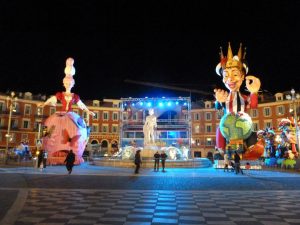
The Flower parades center around models who are decked out in flowery outfits and decoration and ride through the city on flower themed floats. From the floats, the participants throw flowers out into the crowds. The origins of the flower parade go back to the late 1800’s. Initially, the spectacle began as a simple exchange of flowers to entertain tourists, but slowly the idea of the parade quickly developed and was used as a way to pay tribute to the city’s flower producers.
During the Carnival Parade of Lights, the floats come back out at night and light up the city with a colorful display.
Carnival is truly one of the grandest celebrations around the world. Hopefully these Carnivals inspire you to experience the holidays and festivals of other countries.




